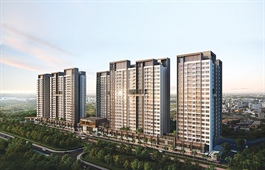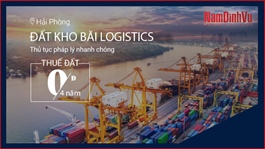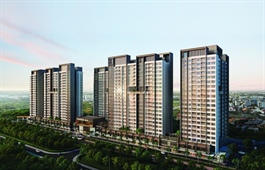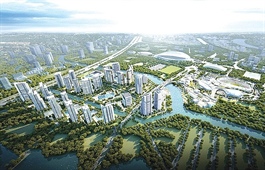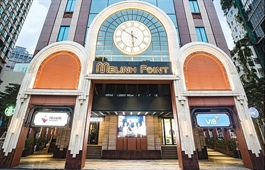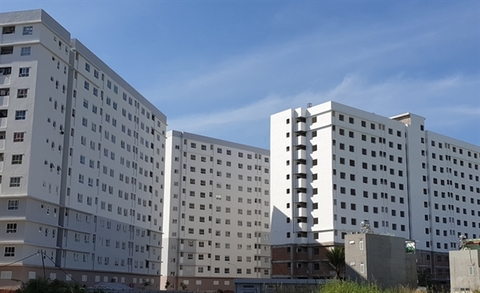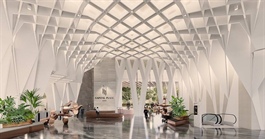Foreign inflows for Vietnam’s real estate bouncing back
Foreign inflows for Vietnam’s real estate bouncing back
The first major signs of a resumption of investment activity have emerged in the real estate market with new brand names entering and others expanding their portfolios in Vietnam.

Foreign inflows for Vietnam’s real estate bouncing back, illustration photo
|
Japanese giant Takashimaya, which invested into a retail centre in Ho Chi Minh City, has expanded its portfolios to other segments of the real estate market with commercial and office projects.
Takashimaya expects to invest around ¥20 billion (around $192 million) in the next three to four years, mostly in real estate.
Along with this flow, Takashimaya, through its subsidiary Toshin Development Company, is now investing more than $12.5 million into construction and operation of a school project with domestic partner Edufit International Education at Starlake Tay Ho Tay. Located in a golden residential area next to Hanoi’s West Lake, Takashimaya’s property aims to bring international-standard education to the local community.
Apart from the school, the company will also be involved in developing commercial and office spaces at the project from 2022 to 2025, alongside two other large-scale commercial projects in Hanoi.
The Starlake residential area in Hanoi is the first overseas real estate project that Takashimaya has participated in at all stages, from land acquisition to renovating a number of mixed-use buildings.
Meanwhile, South Korean investors Liftec and Kumkang Kind have recently joined forces with domestic Smart Construction Group to bring high-tech construction into Vietnam. Smart Construction Group will give priority to Liftec for supplying equipment and to Kumkang for technology transfer and real estate projects.
Swire Properties, a Hong Kong real estate developer with investments across Hong Kong, China, Singapore, and the United States, has also recently partnered with City Garden to develop The River in District 2 of Ho Chi Minh City. According to Guy Bradley, CEO of Swire Properties, with its rising income levels, high rate of urbanisation, and growing foreign investment, Vietnam has great potential and the company looks forward to exploring more investment opportunities here.
“With its robust economic growth and favourable demographics, Vietnam is one of the world’s fastest emerging markets. An innovative masterplan, rapidly improving connectivity, and close proximity to the traditional central business district make the development one of the most enticing in the region,” Bradley said.
The past month also saw the presence of Australia-based Spire Property Group, which is introducing assets from the country to Vietnamese customers.
In the third quarter of 2020 although the real estate market has been impacted by the pandemic and slow sales months, a positive response has nevertheless been shown through data on total foreign direct investment registered in the sector, increasing sharply by 400 per cent in comparison with the second quarter of 2020.
From January to the end of October, around $3.8 billion was poured into real estate sector with more than $940 million of newly-registered investment capital in 66 projects.
According to Hieu Do, head of the Real Estate Division at VinaCapital, industrial property fuelled by demand is surging while the investment community believes that Vietnam will become a major destination for global manufacturers, which has driven up land prices and take-up ratio of industrial parks across the nation.
“Strong capital injections for infrastructure development and governmental support on investment incentives add to the attractiveness of this sector. Developers with existing stock benefit the most since greenfield development becomes extremely challenging due to a quick rise in land clearance and compensation costs,” Hieu commented.
Apart from current developers such as DEEP C, BW Industrial, and VSIP, who are rushing to expand their portfolios in Vietnam, the local market has seen the appearance of LOGOS and SPG Industrial from Australia, all invested in the logistics system in northern province of Bac Ninh.
Meanwhile Regina Lim, head of Capital Markets Research for Asia Pacific at JLL, said that investment volumes showed meaningful improvement in China, South Korea, and Japan over the third quarter.
“Investors returned in greater numbers in this time, reaffirming their appetite for assets and real estate linked to logistics and data centres. We’re confident that the fourth quarter will present a broader range of opportunities across the region, particularly in classes like multi-family and rebounding markets like Singapore,” Lim said.




